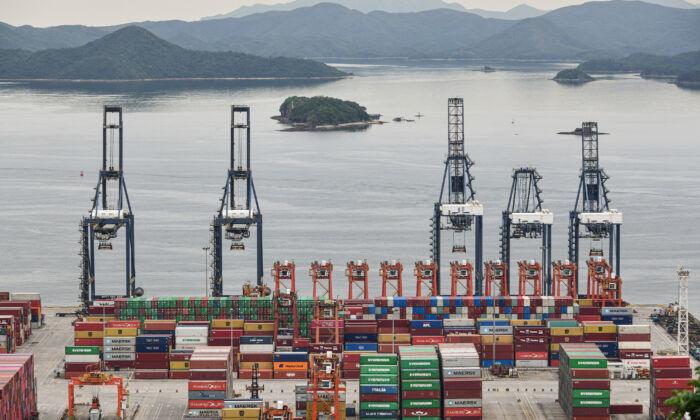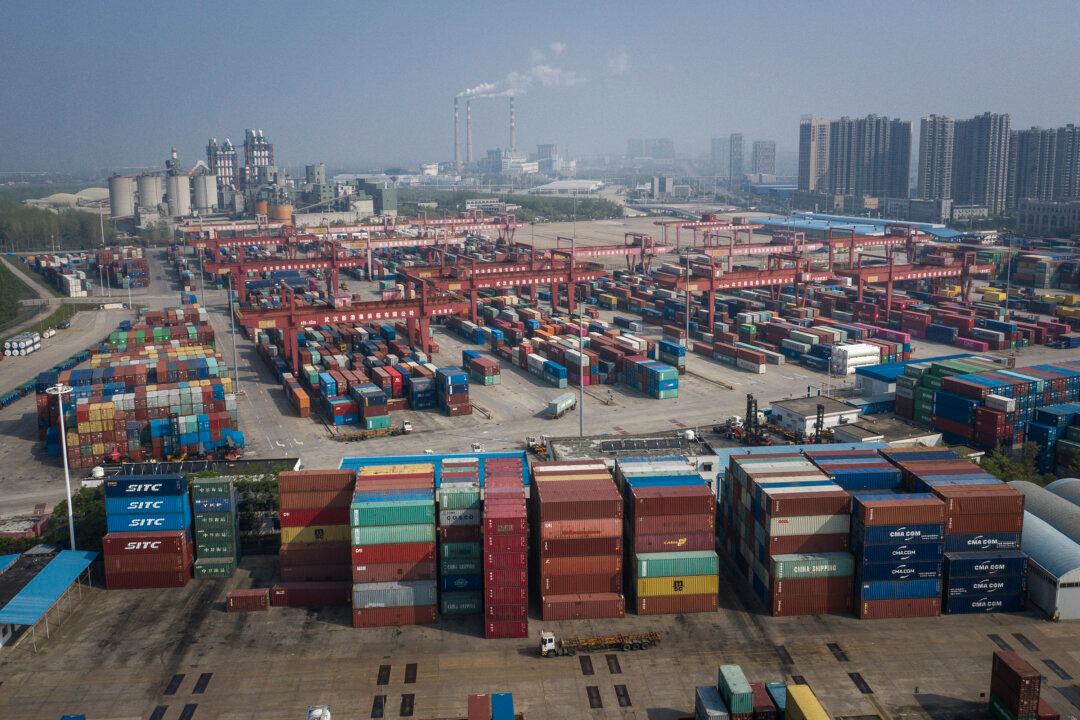May was a great month for Chinese exports. According to the General Administration of Customs, this most recent month for which data are available saw a 12.7 percent rise over April in the value of China’s exports.
The administration notes that if this pace holds up, it will overcome the weakness of earlier months so that 2022 overall will see a 15 percent growth in exports over 2021. This sort of numbers game is entirely misplaced.
What happened in April was a one-time response to the reopening of the Port of Shanghai. It will not repeat. In the coming months, indeed years, an array of forces will keep Chinese exports growth slow.
Counting most immediately against Chinese exports growth later in the year are shifting consumer spending patterns in Europe and America. During the COVID-19 emergency and even in the 2021 recovery, American and European households spent heavily on home entertainment equipment and ways to facilitate remote work.
Those trends greatly benefitted China’s apparent strength in the assembly of electronic equipment. But now that the West has begun to travel again and seek entertainment outside the home, spending has shifted away from such products toward services. Chinese producers have suffered.
Take, for example, Shenzhen Teanabuds Electronics, a maker of wireless earbuds, headsets, and speakers. It reports that its sales to Europe, America, and the Middle East have fallen 50 percent from last year’s levels. Similarly, Guangzhou GL Supply Chain, a maker of garden supplies and simple household items, has also seen its overseas orders fall by half. These are only two examples and are admittedly extreme, but they are nonetheless indicative.

Still more frightening for Chinese exports is the West’s growing need to implement counter-inflationary policies. The West’s 2021 post-COVID recovery, from which Chinese exports greatly benefitted, received huge support from Europe’s and America’s easy monetary and fiscal policies. But now, inflationary pressure has demanded a change in such policy postures.
In the United States, the Federal Reserve (Fed) has begun to withdraw liquidity from the financial system and raise interest rates—by 1.5 percentage points in just the last couple of months. The Fed promises to intensify such restraint going forward. Such changes will constrain economic growth and appetite for Chinese products.
So far, Washington has made little change in its fiscal policy, but it clearly will not extend economic stimulus as it had. Europe is behind the United States in taking such counter-inflationary steps, but it is clearly thinking along the same lines. Indeed, policy shifts have already raised concerns about recession in Europe and America, hardly a good prospect for Chinese exports.
Perhaps most ominous are trends growing directly from China’s development gains. A large part of China’s past remarkable export boom reflected the attractions of the country’s disciplined and inexpensive labor force. It offered such huge cost advantages that China became a go-to place for European and American manufacturers to set up operations and source from Chinese-owned facilities. But as China’s economy has developed and the population has become more affluent, those cost advantages have begun to disappear.

The Shanghai containerized freight index remains high enough to discourage shipping. Though down some 17 percent so far this year, it nonetheless stands four times pre-pandemic levels. This cost difference is convincing some overseas buyers to bring the production sources closer to the point of sale in Europe and America. At the same time, Chinese wages 9.5 percent a year for the last five years, far faster than comparable costs elsewhere in Asia. Internal shipping costs have also risen quickly.
All have begun convincing Western buyers to shift their sourcing to places like Vietnam, Indonesia, the Philippines, and other such venues. Already, Vietnam has won large percentages of orders for products that were once made all but exclusively in China. In summarizing, Shenzhen Teanabuds Electronics’ global marketing director, Zhang Wanli, complained, “We are losing our advantage.”
In time, some of the more immediate adversity will dissipate. But a turn to more judicious economic policies in the West should last, perhaps for years. The continued erosion of China’s cost advantages will keep up export-constraining pressures for even longer.
It is just this developing reality that urged the International Monetary Fund (IMF) to recommend that China reorient its economy away from a dependence on exports toward a greater reliance on domestic consumer demands. It is a step that Beijing has for some time considered essential. To date, however, the authorities have done little to facilitate it.
Perhaps constrained export growth will induce the change Beijing says it wants but has yet to take. That, however, might be a step too far for planners who have counted on exports as the engine of growth for decades.





